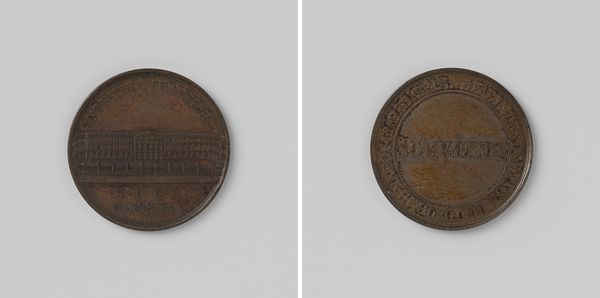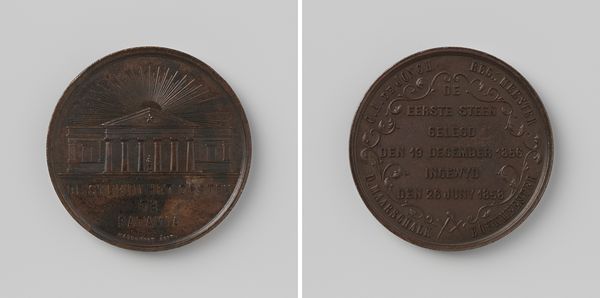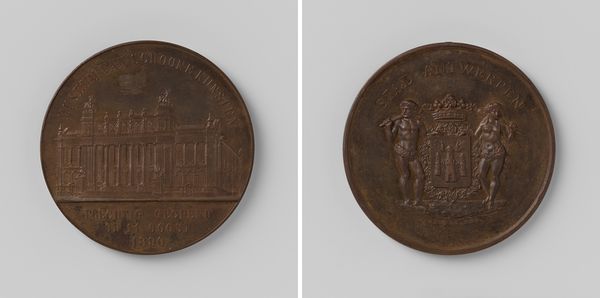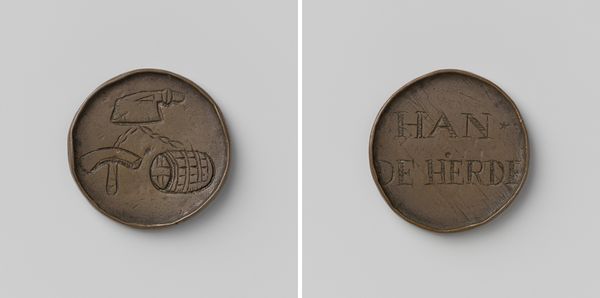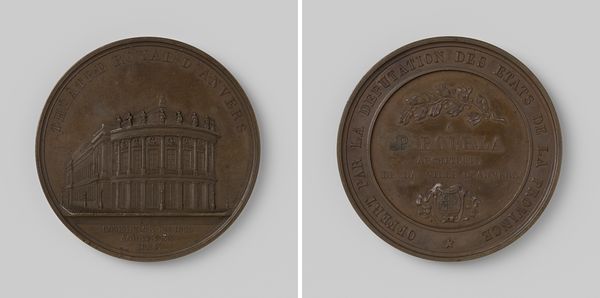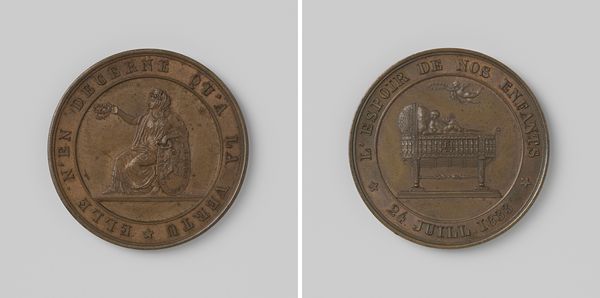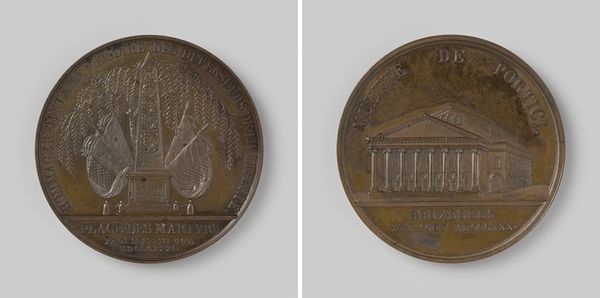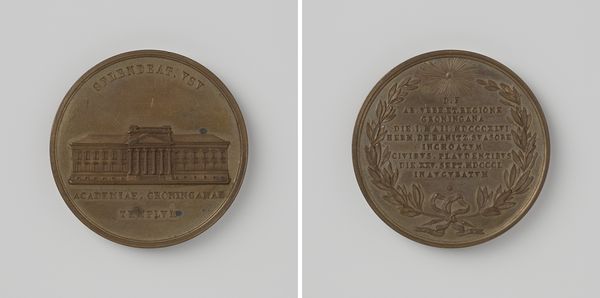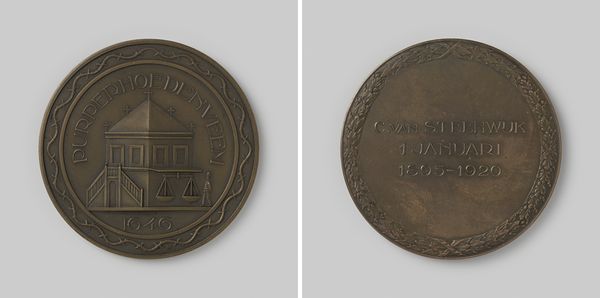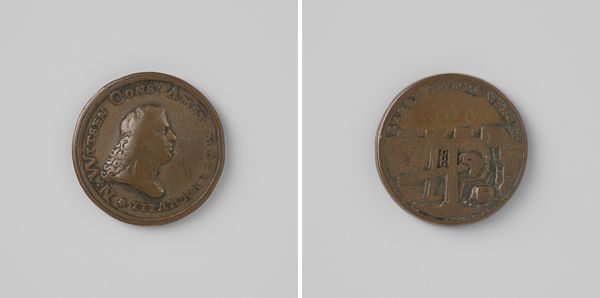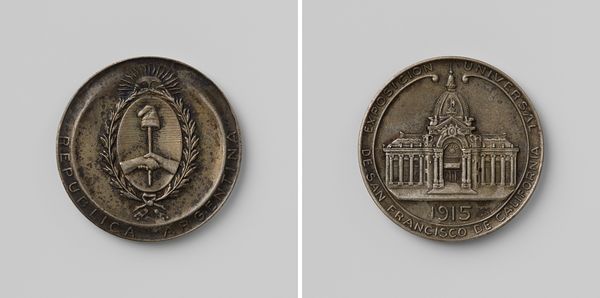
Inwijding van het Diaconie Weeshuis van de Nederlandsch Hervormde Gemeente te Amsterdam 1882 1881
0:00
0:00
jacobsamuelcohenelion
Rijksmuseum
#
product photograph merchandise
#
product shot
#
natural stone pattern
#
toned paper
#
pottery
#
product fashion photography
#
unrealistic statue
#
stoneware
#
product photography
#
cutout
Dimensions: diameter 7.0 cm, weight 142.63 gr
Copyright: Rijks Museum: Open Domain
Curator: Looking at this commemorative medal, it’s striking how detailed the building is for such a small object. Editor: It’s really interesting, this sense of weight and history in something so…manufactured. Jacob Samuel Cohen Elion struck this bronze medal in 1881 to mark the inauguration of the Diaconie Orphanage of the Dutch Reformed Church in Amsterdam the following year. What I find particularly evocative are the almost brutalist lines of the orphanage depicted. The use of bronze is also particularly suited to depicting such solid architectural subjects. Curator: Exactly! You’ve nailed that contrast—the material heft versus the social purpose. This medal represents not just the building, but also the institutional support system it symbolizes. Orphanages were vital, if often bleak, sites of social welfare. The medal presents the modern construction, as a point of national pride, a source of optimism and virtue. Editor: The obverse, depicting the orphanage itself, reinforces the notion of stability and order, I suppose. Yet, I’m drawn to the reverse, to the symbolism of the allegorical figures within these decorated frames, and how the light emanating from the apex shines downwards across these classical depictions and scenes of charity, framed by blooming botanical ornamentations Curator: And each element is so precisely rendered. The details in the orphanage's facade are particularly fascinating when considering the tools and processes employed in the minting of such medals. Were they seeking to replicate this design with the same level of commitment in every batch made? It tells you about their production philosophy and expectations in how a society celebrates and recognises this sort of act, making a place of social care available. Editor: It seems there’s almost a celebration of production itself inherent in it, of progress— both the actual building process, but also social engineering—the ‘care’ system—of creating this charitable institute itself, to then produce this bronze object to celebrate the outcome! Curator: Right, so in its original context, this piece wasn't necessarily about high art, but about marking an occasion, broadcasting institutional values, and reminding people that "good" actions were made in the building, as were recognised as worthy acts to be marked as “historical”. Editor: In today’s museum environment, though, its value is far more nuanced. The museum grants access to the symbolic language used by those in power and those who enacted charity to define cultural values. Curator: Definitely, I walk away seeing the ingenuity in design to produce this in large quantities—that to me, is very impressive! Editor: And I’m just struck by how an object, commissioned to declare the opening of an orphanage, makes me ponder on both the successes and the systematic problems of this particular method of care in the late 19th century.
Comments
No comments
Be the first to comment and join the conversation on the ultimate creative platform.
